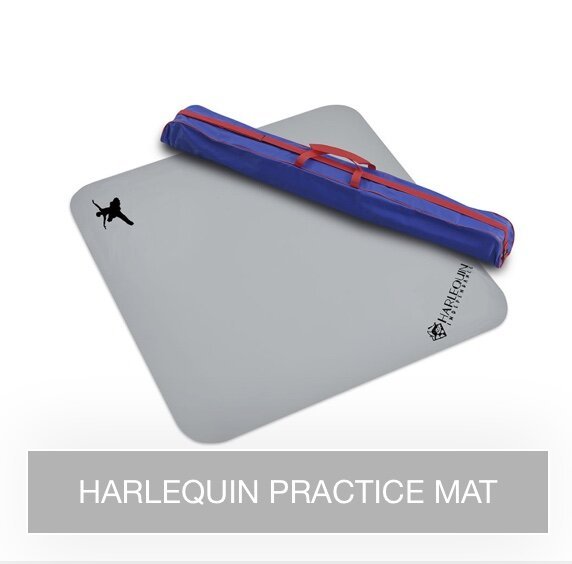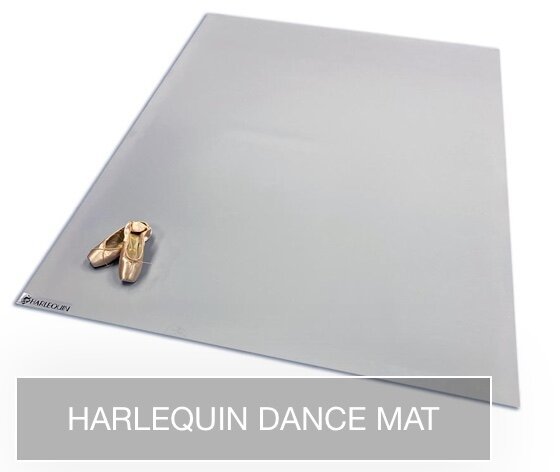How To Create a Ballet Studio At Home
Many of us have days where we can’t make it into the studio, but still want to take class or practice. A great solution is setting up your own home studio! We know there are lots of options out there, and it can be hard to know where to start looking. Not to worry! We have done the research for you. Read on to learn more about how to create your own ballet studio at home, and the various types of equipment that are available.
Different Types of Ballet Barres
While there are several items you can use at home in place of a ballet barre such as a chair or a countertop, they are often not the same. Various countertops can either be too high or too low, making it difficult to effectively keep your posture. Similarly, a chair can be unstable and easily tip over if held onto too tightly, making balancing exercises challenging. If you are looking for a ballet barre to use at home, there are multiple different kinds available for home use. The two most common types are portable, freestanding barres and wall attachment barres. While both mostly depend on the dancer’s preference, there are certain benefits to each. Let’s take a closer look and talk about the differences between them:
Freestanding Barres:
Super quick and easy to assemble, freestanding barres are a very standar go-to. Very few require any tools, so they are easy to both put together and take apart. Freestanding barres are also portable, allowing them to be moved around from room to room, without requiring them to stay in one place. Since you can move your free-standing barre around easily, you can consequently make the most efficient use of limited space. Due to them not being attached to a wall, they are less stable in that they should not be used to pull on or off of. Freestanding barres are more traditionally used for traditional ballet barre classes and balancing work.
Wall Attachment Barres:
Barres that are mounted to the wall have some different benefits. Unlike freestanding ones, barres mounted to the walls can not move and only stay in one place. This is a nice option if you have a space you want to permanently designate for your at home studio, and not have to move a barre around. Wall attachment barres do typically needed tools to drill and attach them into the walls, unlike the freestanding ones that rarely require any tools. They do, however, take up less space and provide more stability, enabling the dancer to hang onto or pull off of them. This type manipulation of the barre is not often used in traditional ballet, but can be nice if you know you want to use your barre for other exercise classes and purposes like Fitness Barre or Pilates.
Vita Vibe Barres
Vita Vibe is one of the world’s largest and most reputable US ballet barre manufacturers. Compared to several other competitors, Vita’s prices are fairly affordable, many of their barres falling under $200. Their products are used by famous companies and studios including the Broadway Dance Center, Xtend Barre, the YMCA, and the Joffrey Ballet. They sell both freestanding barres as well as wall attachment barres, so you can choose whichever type works best for your home! Below are links to their ballet barres to purchase:
Vita Vibe Freestanding Barres:
Vita Vibe Wall Attachment Barres:
Make Your Own Barre
Another great option for an at home ballet barre is to make your own! Using pipes from a home improvement store, such as Home Depot or Lowes, you can easily construct your own portable barre for your home! Ballerina’s By Night have a video on their channel walking you through the materials you need and how to put your barre together!
Height of your Barre
The height of a ballet barre should be in relation to your body. Some of the most common suggestions for how to place the barre are:
If you're standing with your arms at your sides, it would be level with your elbow
If you're standing with your arms in 2nd position, the barre would be level with where your hands are in the second position (though I personally find this suggestion to be just a little too high)
Place between your hip bones and your waist (smallest part of your torso)
When you’re holding the barre, you want your elbow to be able to be down and comfortable whether you’re in plié or rélevé. If it’s too low, you’ll find yourself leaning over in rélevé. If the barre is too high, you’ll find it more difficult to keep your standing shoulder down and back.
Dance Floors
When you’re dancing at home, flooring can be a significant factor. Although both carpet and wood floors are doable to do some basic ballet exercises on, they can sometimes be limiting, especially if you are on pointe. While installing a full dance floor in your home or apartment may not be an option, there are dance floor mats that you can use at home which are portable and easy to use without permanently becoming a part of your floor. Most of these mini dance floors are made of traditional vinyl/marley (the same as dance studios), and are suitable for most styles of dance including ballet and pointe. This type of flooring is safer to practice turning, jumping, and especially pointe work while at home.
Harlequin Floors
Harlequin is recognized as one of the world’s leaders in advanced technology flooring for dance. They are established worldwide, and are the preferred choice for stages and dance professional companies including the National Ballet of Canada, Boston Ballet, New York City Ballet, and American Ballet Theatre. Their floors are slip-resistant, and can be laid down over any hard, smooth surface to protect existing flooring. They sell both a dance practice mat which is smaller, and a slightly larger dance floor mat, both of which can be rolled up and stored after use. Both are great options depending on your needs. Like Vita Vibe, Harlequin’s prices are also fairly affordable, both of their dance mat priced around $100. Below are links to their dance floors to purchase:
Harlequin Practice Mat:
Harlequin Dance Mat:
Let’s dance!
Regardless of whether or not you decide to purchase a ballet barre or a dance floor for your home, dancing and taking online classes at home is still an option for you! Many of us still decide to use chairs, countertops, or stairs for balance and it works just fine! Both wood floors and carpets, although not always ideal, can still be used to do basic ballet barre exercises on. We hope you will join our online classes and dance at home with us! We can’t wait to dance with you!




